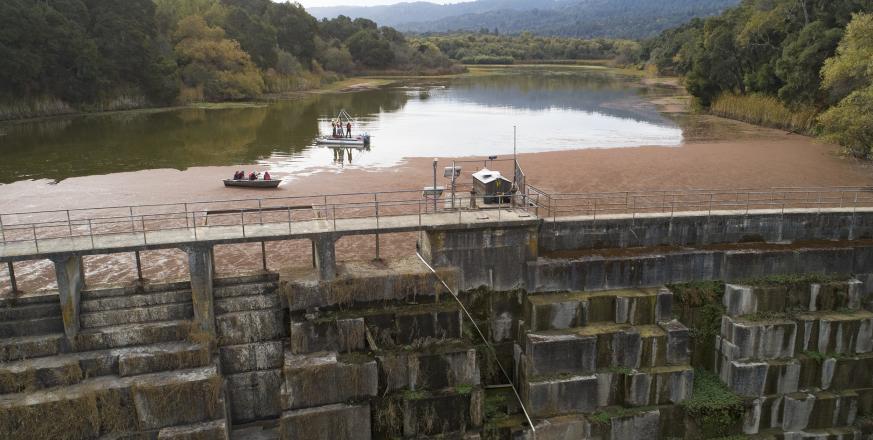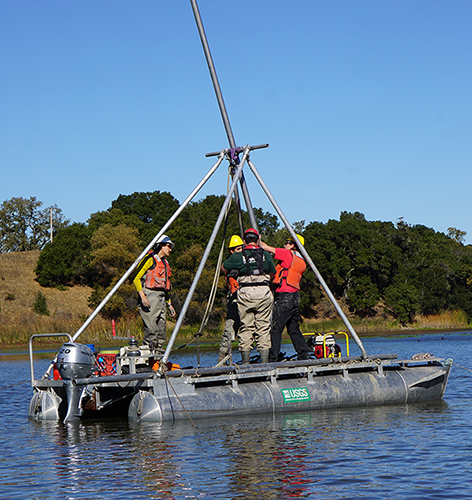Geological signals of the Anthropocene in sediment cores from Searsville Reservoir

Summary
Anthropogenic activities changed our planet over the course of the Holocene, but the scale of human impacts increased dramatically around the mid-20th century, representing the start of the Anthropocene. Global signals of these impacts and the resulting biotic and abiotic changes are captured in the geologic record. These pervasive anthropogenic impacts, including pollution, road-building, the rise of plastics, etc., are comparable in magnitude, uniqueness, and geologic preservational longevity to global changes that mark previous major geologic time intervals.
To identify global and local geological signals that can be used to characterize the Anthropocene, we are examining sediment cores from Searsville Reservoir, a 126-year-old reservoir located at Jasper Ridge in the eastern foothills of the San Francisco Peninsula. We collected four sediment cores ranging from 7.4 to 8.5 meters in length, indicating average sedimentation rates of 6 to 7 cm per year. Adjacent to Searsville, less than 1 km to the west, is Upper Lake, a natural sag pond on the San Andreas Fault. Preliminary test-coring in 2018 verified that Upper Lake has a highly-resolved sedimentary record going back at least 1500 years and likely considerably more. In combination, these two adjacent lakes have exceptional potential to reveal an Anthropocene geological history with yearly and likely even seasonal temporal resolution for the last 126 years, and to at least decadal resolution for the last several millennia. In November 2019, we will be collecting more cores from both Searsville and Upper Lake.
Analyses so far have concentrated on the Searsville Reservoir cores, and have included high-resolution imaging, computed tomography (CT) scanning, X-ray fluorescence (XRF) analyses, preliminary sediment description, and pilot studies to assess potential for studying biotic changes in the region. We will be developing the indicators needed to understand how global signals of the Anthropocene—e.g., radionuclides from nuclear testing, nitrogen (N) and carbon (C) isotopes, components of black carbon, atmospheric pollutants like lead (Pb), and other anthropogenic inputs—match up with local manifestations of human impacts.
▶VIDEO: Allison Stegner describes obtaining and interpreting the cores
Project Location (Sectors 21, 29, 30, 31)
 |  |  |  |  |  |  |  |  |
 |  |  |  |  |  |  |  |  |
 |  |  |  |  |  |  |  |  |
 |  |  |  |  |  |  |  |  |
 |  |  |  |  |  |  |  |  |
 |  |  |  |  |  |  |  |  |



